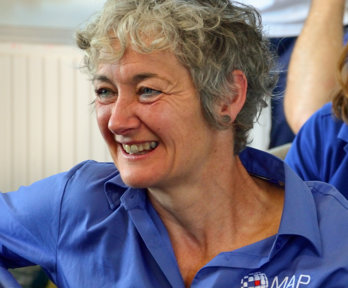This page is to provide support to those in higher education looking for a career in the disaster risk management space. Resources are provided to include recruitment links, top tips, and career profiles from those across this diverse sector.
We would highly encourage you to pursue a career in this sector, as it provides both challenging and fulfilling career paths.
What does a career in the sector look like?
The United Nations Office for Disaster Risk Reduction (UNDRR) defines disaster risk management (DRM) as “the application of disaster risk reduction policies and strategies to prevent new disaster risk, reduce existing disaster risk and manage residual risk, contributing to the strengthening of resilience and reduction of disaster losses.”
When looking at a career in DRM, there are many options and opportunities available with geography being a solid base that provides many pathways into work related to DRM. Some of these positions include academic careers, private sector roles in areas such as risk management and insurance, or public sector careers in the civil service or the humanitarian sector.
Like the careers available, the skills required for DRM positions vary hugely with some positions requiring specific technical skills in GIS or AutoCAD to competencies around project management, information management and disaster risk modelling.
Regardless of the role within the DRM sphere, we are all working with sustainable development where we try to avoid the construction of new risks, address pre-existing risks whilst creating a culture of prevention and resilience.
Useful resources
Preventionweb - exploring what is disaster risk management and why we need to manage risk and not just disasters.
Integrated Research on Disaster Risk - a decade-long research programme with a mission to develop in-depth, practical disaster risk reduction research studies and look at the implementation of effective evidence-based disaster risk policies and practices.
#NoNaturalDisasters, a campaign dedicated to changing the terminology to show that whilst some hazards are natural and unavoidable, the resulting disasters almost always have been made by human actions and decisions.
Profiles
Read profiles with geographers working in disaster risk reduction and learn more about their work and career pathways into the sector.

Lucy Stanbrough on working in Disaster Risk Management
Lucy Stanbrough is Head of Emerging Risks and Geopolitical Risks Research. Here she discusses her experiences of working in Disaster Risk Management.

Vanessa Pilley CGeog on working in Disaster Risk Management
Vanessa is a Senior Scientific Officer at DEFRA, based in London. Here she discusses her experiences of working in Disaster Risk Management.

Jane Toothill on working in Disaster Risk Management
Jane Toothill is a Managing Director at JBA Risk Management. Here she discusses her experiences of working in Disaster Risk Management.

Dr Tina Thomson - Head of Catastrophe Analytics EMEA West-South
Dr Tina Thomson is the Head of Catastrophe Analytics EMEA West-South at Willis Towers Watson.

Liz Hughes OBE on working in Disaster Risk Management
Liz Hughes is a Chief Executive at Map Action. Here she discusses her experiences of working in Disaster Risk Management.

Dr Vanessa Lawrence CGeog on working in Disaster Risk Management
Dr Vanessa Lawrence is a Director of Location International Ltd. Here she discusses her experiences of working in Disaster Risk Management.

Dr Helen Adams on working in Disaster Risk Management
Dr Helen Adams is a Senior Lecturer in Disaster Risk Reduction and Climate Change Adaptation at King's College London. Here she discusses her experiences of working in Disaster Risk Management.

I am a geographer
Discover the range of careers available if you choose geography.
Recruitment pages
-
Civil Service jobs are advertised centrally and are based on success profiles - try and present your behaviours in the STAR format (situation, task, action and result).
-
The environment agencies recruit separately: Environment Agency; Scottish Environment Protection Agency, Natural Resources Wales
-
Humanitarian sector jobs:
-
Reliefweb is is likely the most centralised website for finding jobs in the humanitarian sector. The website also has links to most non-governmental organisations (NGO), information on ongoing disasters, trainings and published information such as situation reports, maps and news/press releases.
-
PreventionWeb is an alternative location for finding jobs in the humanitarian sector as well as providing country profiles, information on the Sendai Framework for Disaster Risk Reduction and definitions, key concepts and information on risk drivers.
-
-
(Re)Insurance - jobs will be advertised direct through insurer/reinsurer/broker companies in addition to there being recruitment companies for the market, and for roles around this, such as catastrophe modelling. There are opportunities for graduate roles which offer an exciting introduction to the industry.
